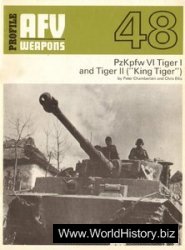Subject Matter
The subject matter of historical archaeology in Mexico includes archaeological remains and relevant historical documents, both indigenous and European in origin, from sites occupied during the Colonial and Independence periods and found within the modern boundaries of Mexico. The problem orientations of investigations into these data generally include one or more of the following: (1) a study of the variable contact period interaction situations between indigenous and intrusive cultures, (2) a study of subsequent continuities and changes within both the indigenous and the intrusive European cultural traditions, and (3) a study of the emergence of new cultural and ethnic traditions, throughout the Colonial and Independence periods.
Research Trends and Disciplinary Origins
There are many different research approaches within postconquest historical archaeological investigations practiced in Mexico today. Such a diversity of approaches is common in the current worldwide burgeoning field of historical archaeology and reflects, according to K. Kelly in 2005, a dynamic and a recently emerging field, in Latin America in general, and for this article, in Mexico specifically. In Mexico, the field of historical archaeology has multiple origins, domestic and foreign, and multiple disciplinary backgrounds. As we suggest later on, the majority of foreign influences come from North American archaeology.
As practiced, Mexican historical archaeology contains varying proportions of the disciplines of history, ethnohistory, cultural and historical geography, archaeology, and anthropological archaeology in the mix. The amount of each in any investigation depends upon (1) the time period addressed, (2) the cultural functions and structures under investigation, and (3) the disciplinary backgrounds and institutional affiliations of the investigators. As a result, Mexican historical archaeology is not a monolithic structure in origin, practice, or theory. There is considerable variation between the investigations carried out within the borders of the national state and we may speak of ‘‘many historical archaeologies’’ (with apologies to Leslie Byrd Simpson).
Since the late 1970s, Mexican scholars have increasingly reflected on the relevance of historical archaeology for increasing our level of knowledge of the past by combining, in various ways, archaeology and history, and by increasing protection of Mexico’s cultural heritage. Such reflections form part of their search to validate and integrate this still-evolving field of research. Some considerations have focused on the terminology or nomenclature to be used to denote the field. Names suggested within these discussions include archaeohistory, the archaeology of capitalism, colonial archaeology, historical archaeology, world systems archaeology, and industrial archaeology (see Industrial Archaeology), all reflecting aspects of a multi-faceted Mexican historical archaeology which takes into consideration the significant political and economic changes in a worldwide setting following CE 1492.
Despite this ‘war of words’ over the designation of a recent development in Mexican archaeology in general, it is generally understood that what is practiced as historical archaeology in non-Mexican settings is what is practiced in Mexico today.
Historical archaeology in Mexico is a discipline which makes use of both archaeological and historic data studying the material remains of any postcontact historical period. This is possible whenever there is a documentary record providing additional information about the materials and contexts recovered in archaeological investigations. Historical archaeology in general, and in Mexico in particular, studies the materials related to European cultural expansion throughout the world beginning in the fifteenth century and ending with industrialization or the present day, depending on local conditions.
As so defined, historical archaeology can make important contributions to contemporary anthropology by examining the processes of European expansion, exploration, and colonization as well as those of culture contact and imperialism. These processes form a basis for one of the most dynamic periods in world history, reflected both in documents and material culture, recovered by archaeological investigations (see Historical Archaeology: As a Discipline).
Discussions have also addressed the relationships of Mexican historical archaeology to current archaeological theoretical perspectives ranging from historical particularism, to culture history, processual (new archaeology) (see Processual Archaeology), post-processual (see Postprocessual Archaeology), and Marxist archaeology (see Marxist Archaeology), alone or in various combinations. In some projects, theoretical positions have included critical theory and Iberoamer-ican social archaeology.
In addition, there have also been debates about legal issues related to the national patrimony as well as more mundane, but relevant, topics such as artifact taxonomic systems.
Historical Archaeology Institutional Contexts - INAH
As noted above, investigations in Mexico are varied in part because of their many different institutional contexts. Today the major institutional context includes, as mandated by law in 1972, the Instituto Nacional de Antropologia e Historia (INAH), whose relevant dependencies in Mexico City and in the regional state offices are obligated to carry out archaeological salvage and rescue operations, not only for preconquest remains but also for those of the Colonial and post-Independence periods whenever archaeological deposits and structures would be adversely affected by contemporary activities. Examples of such activities include Mexico City’s still ongoing Metro construction, along with, there and elsewhere, the maintenance and construction of roads, sewer and water systems, dams, reservoirs, canals, and water supply systems. Also included are architectural restoration projects, building expansion, and building demolition.
Site reports from such operations in salvage and rescue historical archaeology in Mexico, although not widely distributed, provide valuable information on associated artifacts and architecture, and on laboratory and technical analyses of the materials recovered. Initially, the results of such research were
Not always fully published. However, there are now increasing numbers of books and articles presenting the results of research, thus enriching the record for Mexico and for Hispanic America as well. At times, many of these data have been used to examine general theoretical questions of culture contact and acculturation along with the construction of Colonial and Independence period social systems, identities, and meanings. Such questions would be addressed by both documentary records and archaeological material correlates.
Historical Archaeology Institutional Contexts - Academic Settings Domestic and Foreign
Although academic historical archaeology in Mexico does include the salvage and rescue of historical archaeological materials, more frequently archaeologists from academic settings try to combine such salvage and rescue operations with problem-based research projects tied to a variety of theoretical perspectives on social and cultural dynamics and evolution. In general, these would be related to studies of those processes leading to the modern world and to capitalism. In Mexico, the rise of national systems and national identities as well as the appearance of new social and ethnic identities would characterize these studies.
Formal academic training in historical archaeology in Mexico is relatively rare. Undergraduate courses in historical archaeology have occasionally been offered at the National School of Anthropology and History in Mexico City, and at the University of the Americas in Cholula, Puebla. The Autonomous University of San Luis Potosi will include historical archaeology as part of the bachelor’s program. However, there is only one graduate program in historical archaeology at the National School of Anthropology and History. There are very few active full-time professional historical archaeologists in Mexico, most being Prehispanic archaeologists who have extended their interest through chance or design into the historic periods.
Regional Cultural and Administrative Variability in Time and Space
Further differentiation in the subject matter of Mexican historical archaeology is introduced by the great degree of Prehispanic regional cultural variability within Mesoamerica between various state systems such as the Maya, the Zapotec, the Aztec, and the Tarascans. In the immediately adjacent culture areas to the north such as the Greater Southwest, the peninsula of Lower California, and northeastern Mexico, there were many non-state-level cultures ranging from hunting and gathering nomadic people to sedentary agrarian villages.
The Spanish empire governed these areas, from Panama to what is now the Southwest United States, through three audiencias (Guatemala, Mexico, and Guadalajara) with political, judicial, and fiscal powers. Although they overlap, the borders of Mesoamerica, with complex state systems, the Greater Southwest with village agriculturalists, and the peninsula of Lower California and northeast Mexico with hunters and gatherers, do not coincide completely with those of the audiencias or of Mexico today. Communities may have participated in several larger cultural, political, and economic systems during their existence.
Beyond the variations present in indigenous cultures and imperial administrative structures, additional complexity was provided by the different regional origins of Spanish settlers from the Iberian Peninsula. Many of these regional cultural variations and their impact on Hispanic America have been discussed in detail by George Foster in his 1960 monograph on culture and conquest. In addition, there was extreme variability in the kind of church institutions introduced initially for Christian conversion and subsequently maintained for the spiritual care of the indigenous people as well as Spanish settlers. Variations occurred in the order of regular clergy present and the nature of the transition to secular clergy in some areas.
Additional regional and local differences in Mexico were brought about by demographic decline due to disease, the acquisition of land and the introduction of Spanish-owned ranchos and haciendas, and the exploitation of metal ores and petroleum resources. The impact of these too would vary according to the time period and political situation in the imperial center of Spain, and during the Independence period, in Mexico City, capital of the new republic.




 World History
World History









